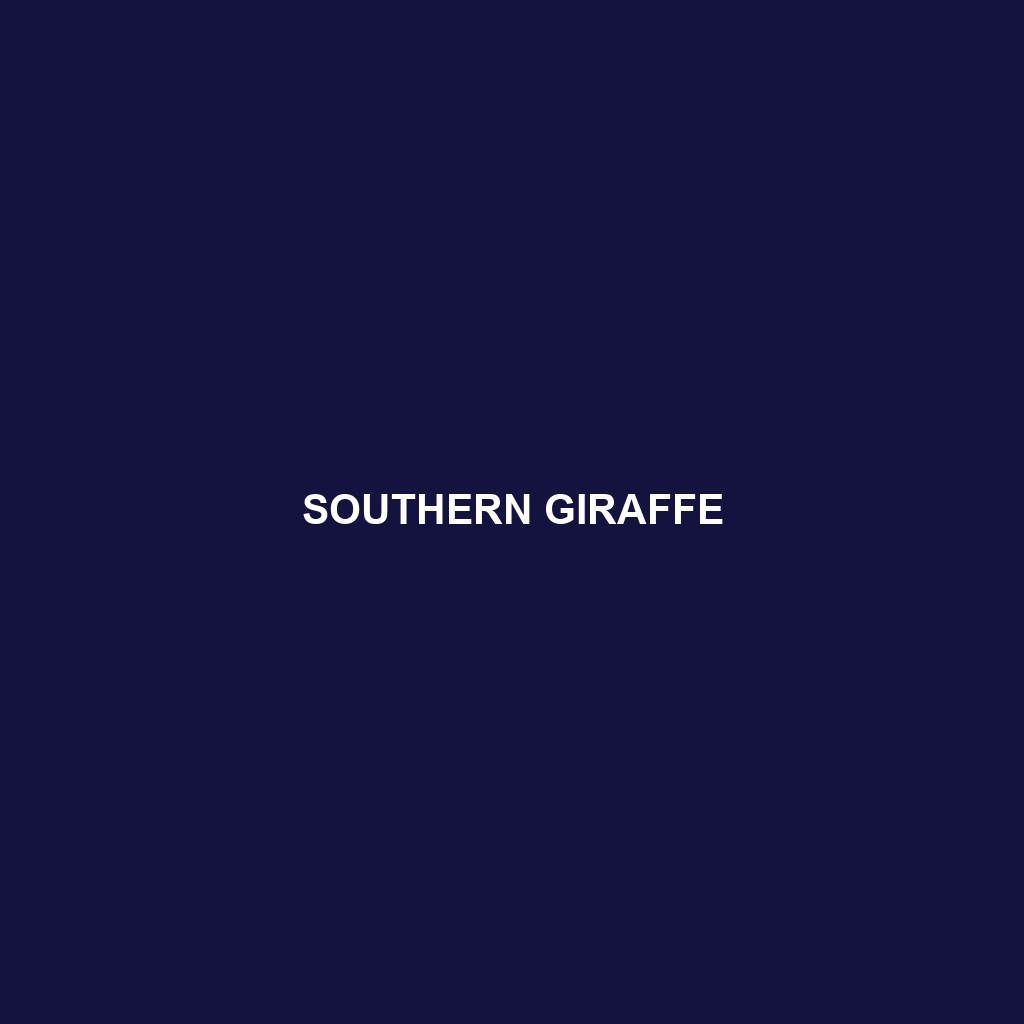Northern Giraffe Species Description
Common Name: Northern Giraffe
Scientific Name: Giraffa camelopardalis
Habitat: The Northern Giraffe is primarily found in the savannas, grasslands, and open woodlands of Central and East Africa. Key geographic locations include nations such as Kenya, Uganda, and parts of Tanzania. These environments are characterized by scattered trees which provide both shade and a food source for these majestic animals.
Physical Characteristics: The Northern Giraffe can reach a height of up to 18 feet (5.5 meters), making it one of the tallest land animals. Its unique coat features irregular brown patches separated by lighter fur, providing excellent camouflage in the dappled sunlight of its habitat. Distinctive features include its long neck and ossicones—horn-like structures on its head that make it easily recognizable.
Behavior: Northern Giraffes are social creatures, often seen in loose herds. Their behavior includes browsing for food at great heights, which helps them to minimize competition with other herbivores. These giraffes exhibit a calm demeanor but can run at speeds of up to 37 miles per hour (60 kilometers per hour) when necessary. They communicate through a series of low-frequency sounds that are often inaudible to the human ear.
Diet: The diet of the Northern Giraffe primarily consists of leaves, fruits, and flowers from various trees, with acacia being a favorite. Their long tongues, which can extend up to 18 inches (45 centimeters), help them reach high foliage and strip leaves from branches. This browsing behavior is crucial in shaping their environment and maintaining ecological balance.
Reproduction: Northern Giraffes typically breed year-round, but most mating occurs during the rainy season. The gestation period lasts about 15 months, usually resulting in a single calf. Newborn giraffes are approximately 6 feet tall (1.8 meters) at birth and can stand within a few hours. Maternal care is vital as mothers protect their calves from potential predators.
Conservation Status: The Northern Giraffe is currently classified as “Endangered” by the International Union for Conservation of Nature (IUCN). Habitat loss, poaching, and human-wildlife conflict are significant threats to their population. Conservation efforts are underway to protect these magnificent creatures and their habitats.
Interesting Facts: Did you know that Northern Giraffes have a prehensile tongue that can be up to 20 inches (50 centimeters) long? This unique adaptation not only aids in feeding but also serves as a tool for grooming. Additionally, giraffes have a unique cardiovascular system allowing them to manage pressure when bending down to drink.
Role in Ecosystem: Northern Giraffes play a crucial role in their ecosystem as herbivores. By feeding on leaves from tall trees, they facilitate the growth of various plant species and allow for light to reach understory vegetation. Their movements help disperse seeds and maintain the health of the savanna environment, ultimately benefiting multiple species within their habitat.
